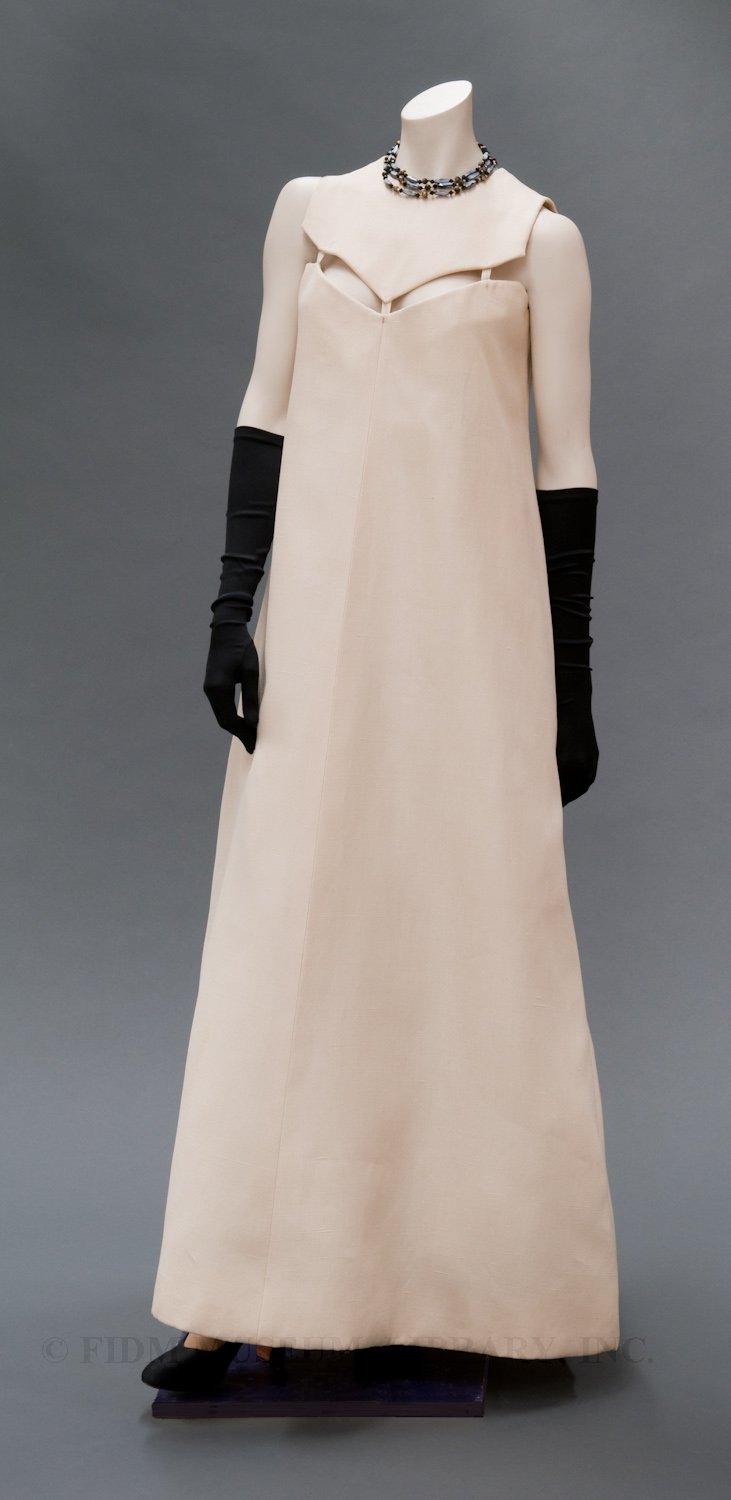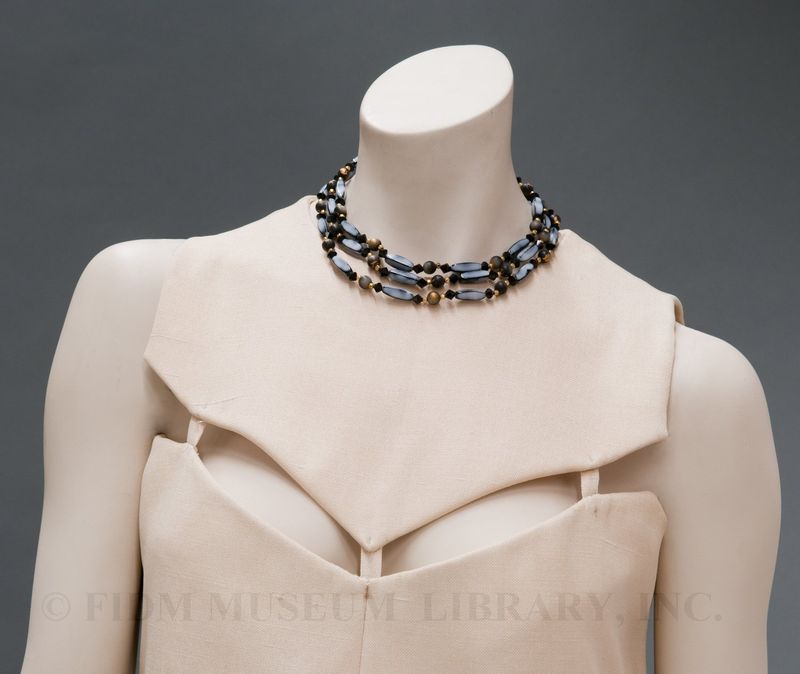Last week's announcement that Raf Simons is leaving Christian Dior reminded us of this 2012 post on Marc Bohan, who designed for the House of Dior for thirty years. Simons is only the fifth designer to hold the position of creative director since Dior's death in 1957, after Yves Saint Laurent, Bohan, Gianfranco Ferré, and John Galliano. What does it take to design for Dior, and who should fill Simons' shoes?
 Marc Bohan for Christian Dior
Marc Bohan for Christian Dior
c. 1966
Gift of Mr. and Mrs. George Sidney
S2001.27.1
When Marc Bohan presented his first haute couture collection for Christian Dior in 1961, the New York Times reported pandemonium: "the shouting, clapping, surging mob at the press showing caused chaos in the elegant salon. M. Bohan was…kissed, mauled, and congratulated. Chairs were toppled."1 Bohan's collection was inspired by the 1920s, and featured short chiffon dresses with dropped waists and double-breasted jackets with a straight line. The enthusiastic reception to Bohan's collection signaled not only approval of his designs, but also relief that the most influential house in the haute couture was making a comeback after the rocky years of Yves Saint Laurent's tenure. Appointed head designer for Dior after the founding designer's death in 1957, the young and mercurial Saint Laurent's first collection for Dior was warmly received. But Saint Laurent's 1960 "Beatnik" collection, which featured leather skirts and black turtlenecks, was too much for the women who patronized the haute couture. In contrast, Bohan was an experienced designer, who had worked in the haute couture since 1945. His first position was at Robert Piguet, though he soon moved to Molyneux, later becoming head designer at Maison Patou.
Bohan assumed the mantle of Dior just as the world of the haute couture was beginning to change dramatically. In retrospect, the years 1947-1957 are generally considered the pinnacle of the haute couture. With Christian Dior at the forefront, haute couture designers were the arbiters of chic, producing exquisite fashions for the elite. These creations were then modified by manufacturers and/or retailers to appeal to the eye and wallet of everywoman. But in the 1960s, this system went head over heels as young women began disregarding the dictates of the haute couture in favor of diverse styles developed by and for the younger generation. This emerging youthquake would permanently alter the way that haute couture was produced and perceived. Saint Laurent's "Beatnik" collection, which was influenced by the style of Parisian bohemians and not the elite patrons of the haute couture, actually predicted the emerging relationship between haute couture and street fashion.
London was a hotbed of street fashion, with numerous small boutiques offering youthful styles at relatively inexpensive prices. Young designers with little experience, not the years of training required in the haute couture, opened boutiques. Mary Quant's Bazaar, which featured her schoolgirlish minidresses, was one of the first. Aware that something was happening in London, Marc Bohan travelled to the newly fashionable city in 1966. Though impressed with the energy of Swinging London, Bohan wasn't persuaded by the style of its residents. On returning to France, Bohan made a remark that indicated his belief in the primacy of the haute couture: “A couturier’s job is dressing a woman, making her elegant…Our client cannot wear [youthquake fashions] and look beautiful.”2
Though Bohan was aware that his clients were not ready to adopt the styles emerging from the youthquake, the peek-a-boo bodice of this white sheath dress suggests that youthquake fashions were influencing Bohan. During the 1950s and early 60s, haute couture evening gowns weren't very revealing. Strapless gowns were popular and lowered necklines were not unusual, but evening dresses were typically more decorous than titillating. In contrast, the bodice of this Marc Bohan for Christian Dior evening dress is deliberately provocative. Even though Bohan realized that neither he nor his clients were ready to abandon haute couture and adopt youthquake fashions, this design indicates how the haute couture translated one aspect of youthquake style: exposed skin.
During the 1960s, skin was on display. Miniskirts rose to great heights, exposing almost the entire length of a woman's legs for the first time in decades. Sheer blouses, usually embellished with two strategically placed pockets, were fashionable. Rudi Gernreich was probably the most notorious designer of transparent fashions, including a see-through vinyl shirt and his famous topless bathing suit. The peekaboo lacing on this pair of green and white suede boots from our collection frames and reveals an unexpected area of the body. Exposed skin was equated with freedom of body and mind, an indication that you weren't bound by the normal strictures of society.
1 Donovan, Carrie. "Dior Collection by Marc Bohan, Successor to St. Laurent, Is a Hit." New York Times. 27 Jan. 1961: 1.
2 Lobenthal, Joel. “Radical Rags: Fashion of the Sixties.” New York: Abbeville Press. 1990: 25.



thanking you ,for sharing such beautiful one of a kind masterpiece,dreamin of witnessing in the future.
Thank you for your appreciation!